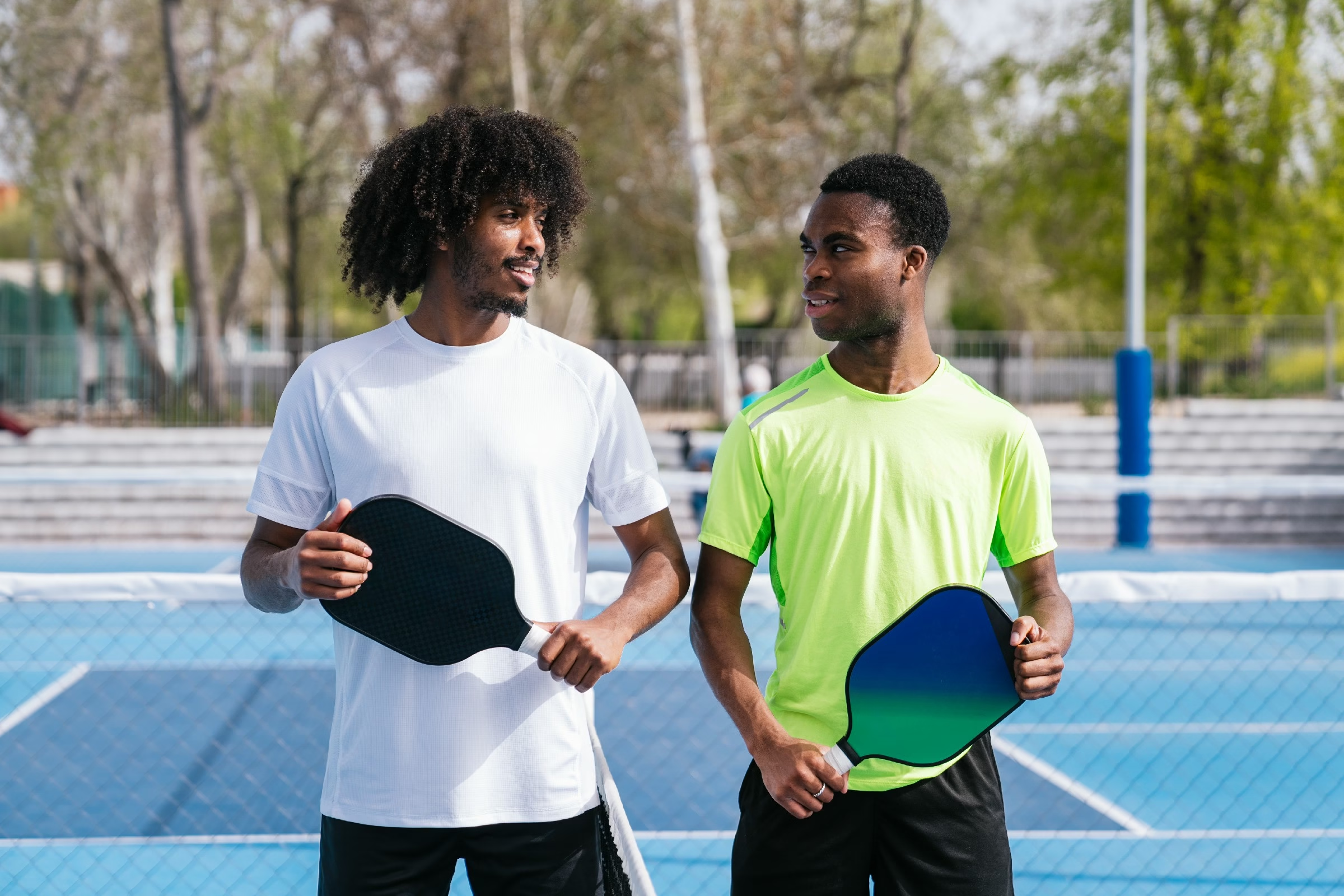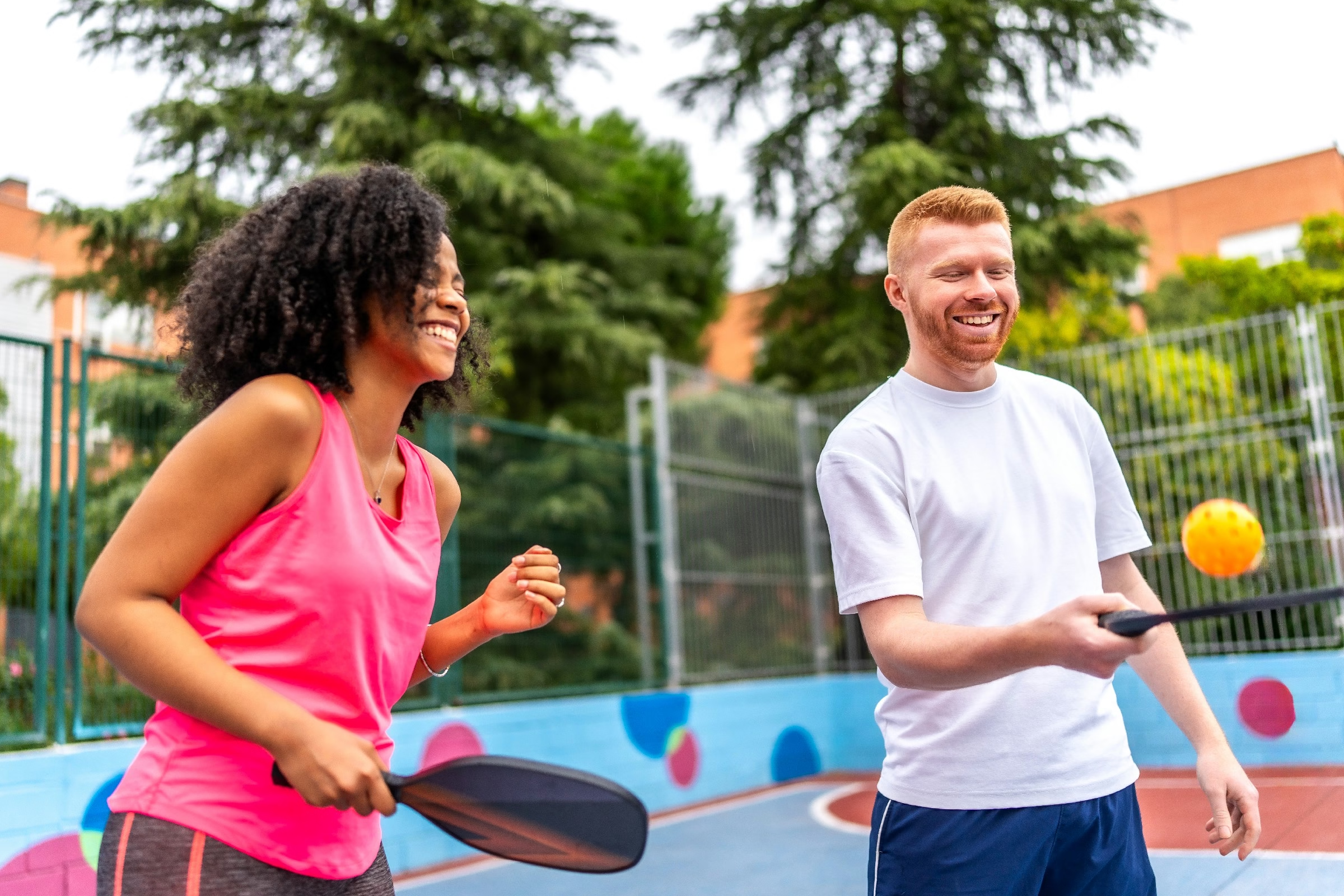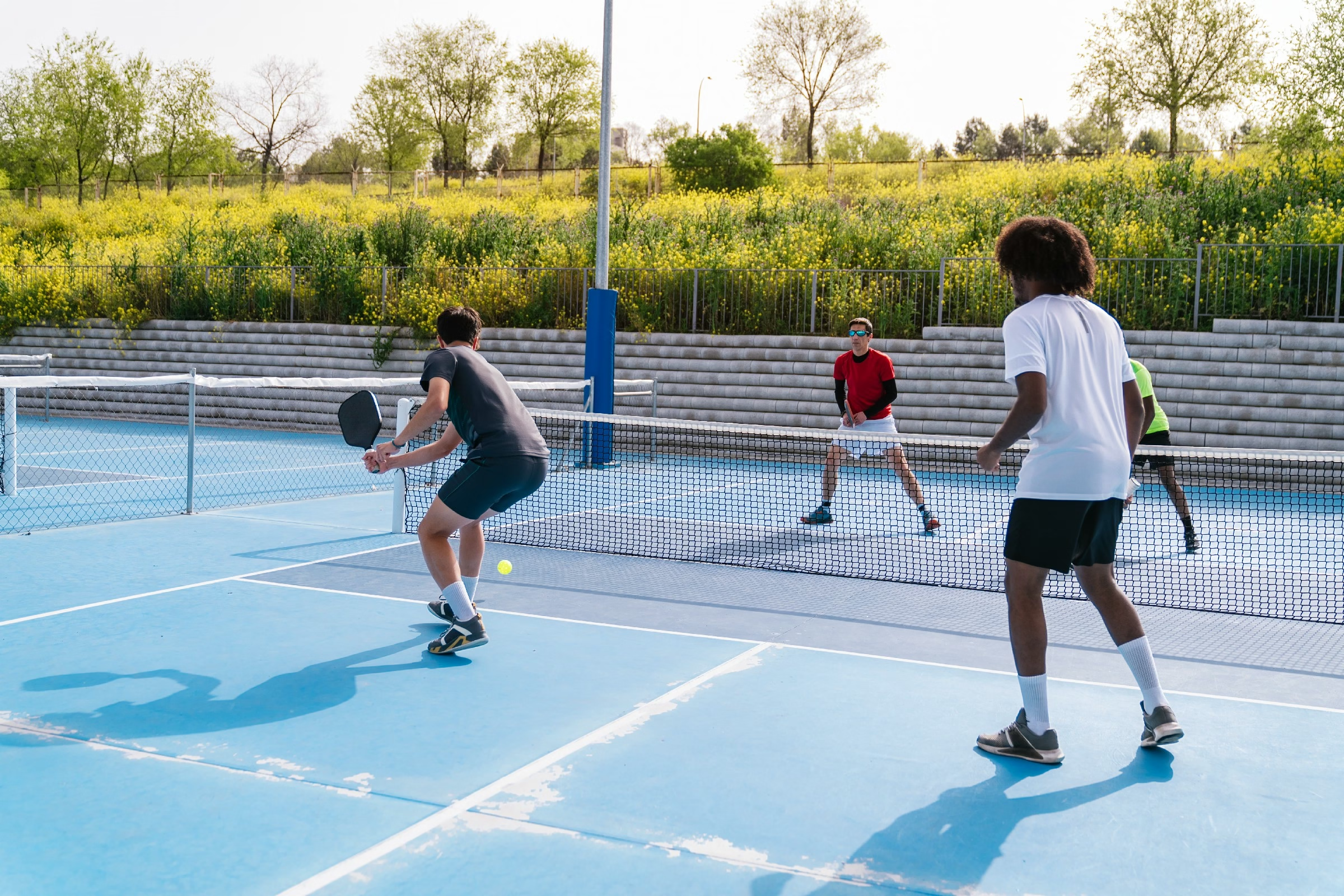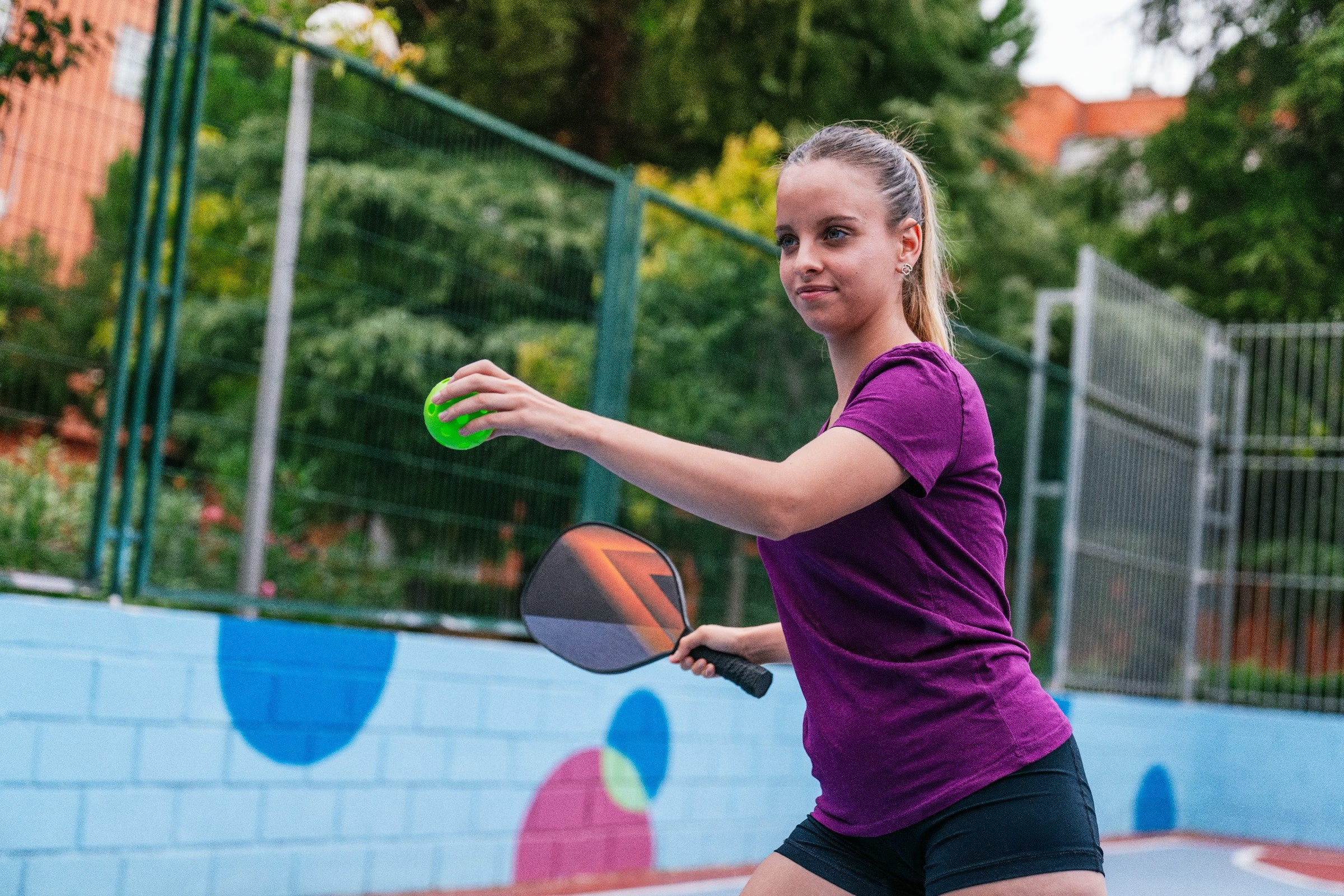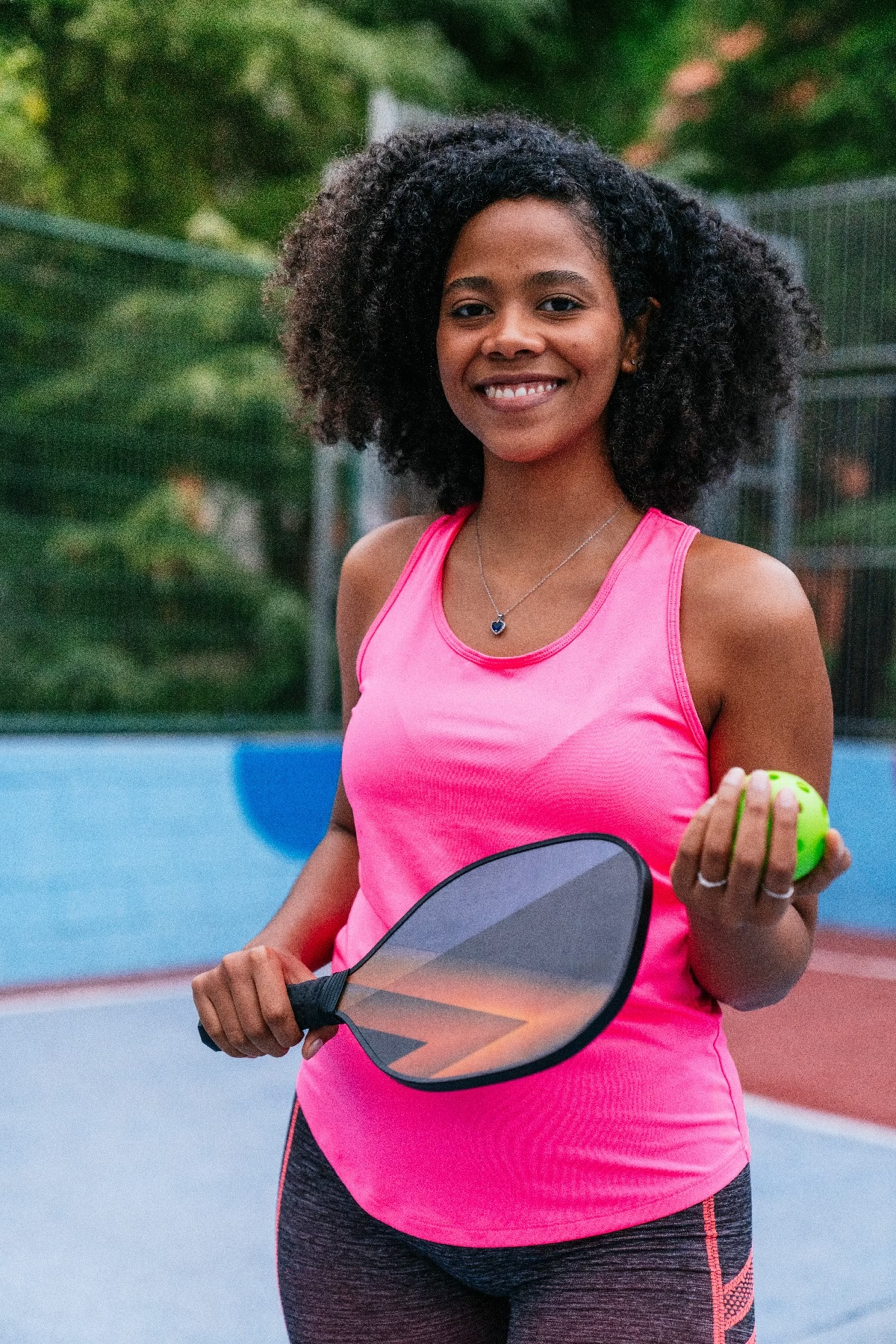Blog
how do you grip a pickleball paddle

Mastering the Grip: Your Key to Success on the Pickleball Court
As the sun glistens off the polished surface of the pickleball court, excitement fills the air, whipping through the players’ hearts like a gentle breeze. With paddles in hand, they prepare for one of the fastest-growing sports in the world. While strategy, agility, and teamwork are frequently enough associated with competitive play, the foundation of every great game starts with a seemingly simple yet crucial element: how you grip your pickleball paddle. In this article, we delve into the essential techniques and tips for achieving the perfect grip, empowering you to enhance your performance and confidence on the court. whether you are a beginner eager to learn the basics or an experienced player looking to refine your technique, understanding paddle grip is your first step toward unlocking your full potential in the dynamic world of pickleball.
Table of Contents
- Understanding the Anatomy of a Pickleball Paddle Grip
- Finding the Perfect Grip Size for Your Hand
- exploring Different Grip Styles for Enhanced Control
- Mastering the Continental Grip for Versatility
- Techniques to Maintain a Comfortable and Secure grip
- common Grip Mistakes and How to avoid them
- Q&A
- In Conclusion
Understanding the Anatomy of a Pickleball Paddle grip
The grip of a pickleball paddle is crucial for optimal performance. Unlike other racquet sports, the grip can considerably influence control, power, and spin. To grasp the paddle effectively, it’s essential to consider a few key components of the grip:
- Grip Size: Choosing the right grip size ensures comfort and prevents injuries.A grip that is too small can cause the paddle to twist in your hand,while one that is too large can lead to excessive tension.
- Grip Material: Paddles typically feature grips made from a variety of materials. From cushioned rubber to textured finishes,the right material shoudl absorb sweat and maintain a secure hold.
- Grip Techniques: Different techniques can affect your gameplay, including the continental grip and the eastern grip. Understanding these techniques will help you execute shots more effectively.
To further clarify the anatomy of a paddle grip, consider the following table that outlines the different elements and their impacts on play:
| Grip Element | Impact on Play |
|---|---|
| Grip Size | Ensures comfort and reduces injury risk |
| Paddle Texture | Enhances grip during play, especially during intense rallies |
| Grip Style | Affects shot control and ability to generate spin |
Ultimately, mastering the grip can take time and practice. It’s essential to experiment with various styles and grips to find what works best for your play style. Remember, the right grip not only optimizes your performance but also enhances your overall enjoyment of the game. Make it a priority to regularly evaluate your grip as you develop your skills and adapt to the ever-evolving demands of pickleball.
Finding the Perfect Grip Size for Your Hand
Finding the perfect grip size for a pickleball paddle can significantly improve your performance and comfort on the court. The grip size impacts your control, power, and overall playing experience. To ensure you select the right grip, start by measuring your hand. The most common method involves using the following steps:
- Measure Your Dominant Hand: Use a ruler to measure from the tip of your ring finger to the base of your palm.
- Determine Grip Size: Compare your measurement to the standard grip size chart to define your ideal grip size.
- Test It Out: If possible, hold the paddle before purchasing to see how it feels during a swing.
A table highlighting standard grip sizes can be useful for quick reference:
| Grip Size (inches) | Hand Size (inches) |
|---|---|
| 4” | Less than 7” |
| 4 1/8” | 7” – 7 1/4” |
| 4 1/4” | 7 1/4” – 7 1/2” |
| 4 3/8” | 7 1/2” – 7 3/4” |
Another approach to finding the right grip size is by using the “V” method. Hold the paddle in your dominant hand with your fingers wrapped around the handle. If you can comfortably create a “V” shape between your thumb and index finger, you’ve likely found a fitting grip size. It’s crucial to note that personal preference plays a role, and some players might benefit from using a grip that is slightly smaller or larger than their measured size. Always remember to consider the texture and material of the grip as well,as these factors can influence your comfort and performance during play.
exploring Different Grip Styles for Enhanced Control
The way you hold your pickleball paddle can significantly influence your performance on the court. Each grip style offers unique advantages that can enhance your control and precision during play. Consider experimenting with some of the most popular grip styles to find the one that best suits your playing style:
- Continental Grip: A versatile grip suited for all types of shots. This grip allows for quick transitions between forehand and backhand strokes.
- Eastern Grip: Ideal for generating topspin, this grip allows players to hit powerful forehands and is favored by those who prioritize strong baseline shots.
- Western Grip: Designed for heavy topspin and high-bouncing shots, this grip can be particularly effective for aggressive players looking to dominate the net.
choosing the right grip also involves understanding how each style interacts with your paddle’s edge guard and handle length. As an example, a compact grip can provide more agility, allowing for swift paddle movement, while a larger grip might offer added stability for powerful strikes. Below is a comparison of grip attributes:
| Grip Style | Best For | Control Level |
|---|---|---|
| Continental | Versatile Play | High |
| Eastern | Powerful Forehands | Medium |
| Western | Topspin Shots | Medium to Low |
Developing your grip also involves body mechanics and how your stance can affect your shot execution. Players often position themselves in different stances to align with their grip, achieving a fluid movement for a accomplished strike.Pay attention to how adjusting your grip in combination with your footwork can produce more effective shots. Remember, finding the optimal grip may take some practice, but with determination, you can identify the style that elevates your game.
Mastering the Continental Grip for Versatility
To truly harness the power of the Continental Grip, players must first understand its unique features and benefits. This grip is favored for its adaptability, allowing players to execute a wide range of shots without needing to constantly adjust their hand position. With the paddle held as if shaking hands, this grip naturally positions the fingers and thumb around the handle, creating a strong and stable foundation. Here’s what makes it stand out:
- Multi-functional use: Ideal for both forehand and backhand shots.
- Improved wrist action: Facilitates greater wrist snap for spin and control.
- Quick transitions: Easily switch between various shots during a rally.
Practicing the Continental Grip involves positioning the paddle correctly in the hand, with the base knuckle of the index finger resting on the second bevel of the paddle handle. This grip allows the player to tap into their natural instincts for ball striking. It is indeed crucial for newcomers to spend time familiarizing themselves with this grip, as it will help form an inherent feel for how to maneuver the paddle during play. Key points to remember include:
- Relax your hand: Avoid gripping too tightly to maintain mobility.
- Keep your thumb behind the handle: This provides added control.
- Practice with various shots: Integrate serves, volleys, and dinks to build comfort.
When first adopting this grip, players may feel awkward or unsure. This is why incremental practice is essential, as it builds muscle memory and confidence. engaging in drills that target different aspects of the game will not only enhance your ability to use the Continental Grip effectively but also improve overall gameplay.Here’s a quick guideline to track the key transition phases for utilizing this grip:
| Phase | Focus | Duration |
|---|---|---|
| Initial Grip | Familiarize with hand positioning | 10 Minutes |
| Forehand Practice | Develop accuracy and control | 15 Minutes |
| Backhand Practice | Cultivate rythm and technique | 15 Minutes |
| Mixed Drills | Combine shots for fluid transitions | 20 Minutes |
Techniques to Maintain a Comfortable and Secure grip
To achieve an optimal grip on your pickleball paddle, start by ensuring that your grip size is correct. this can often be overlooked but is crucial for both comfort and control during play. Use the two-finger test: grab the paddle in your dominant hand and ensure that you can fit two fingers comfortably in the gap between your fingertips and the bottom of your palm. If the grip feels too tight or too loose, consider switching to a different size. additionally, applying an overgrip can definitely help you fine-tune the thickness while providing extra cushioning and moisture absorption.
Another effective technique is to adopt a proper grip style, either the Eastern grip or the Continental grip. The Eastern grip involves holding the paddle as if shaking hands with it, promoting enhanced spin and control. Conversely,the continental grip allows for versatility,aiding both forehand and backhand strokes.experiment with both types to discover which aligns best with your playing style, ensuring that your wrist remains relaxed and flexible to maintain responsiveness during swings.
Lastly, consider the importance of hand positioning and finger placement.when gripping the paddle,your fingers should wrap comfortably around the handle without excessive pressure. The use of your index finger can provide additional control; try extending it along the paddle for stability, or curl it around the handle for a firmer grip. Here’s a quick reference table to summarize the key factors to focus on:
| Factor | Description |
|---|---|
| Grip Size | Ensure the paddle fits comfortably in your hand. |
| grip Style | Choose between Eastern or Continental to match your play. |
| Finger Placement | Wrap fingers around the handle to maintain control and comfort. |
Common Grip Mistakes and How to Avoid them
When learning to grip a pickleball paddle, one common mistake players make is holding the paddle too tightly. Tension in your grip can lead to poor control and decreased power. Rather, aim for a relaxed grip; imagine holding a bird—firm enough that it doesn’t escape, but gentle enough to not crush it. A relaxed grip enhances your feel for the paddle and allows for better wrist movement, which is essential in executing various shots effectively.
Another frequent error is using an improper grip size. The paddle should fit your hand comfortably, allowing for precise maneuverability. If the grip is too small, it can lead to over-gripping, while a grip that’s too large may cause you to lose control.To determine the right grip size, consider the following:
| Measurement (inches) | Recommended Grip Size |
|---|---|
| 4 – 4.25 | Small Grip |
| 4.25 - 4.5 | Medium Grip |
| 4.5 – 4.75 | Large Grip |
lastly, many players overlook the importance of hand positioning on the paddle. Placing your hand too far up or down the handle can throw off your balance and shot accuracy. Experiment with the following positions to find what feels most comfortable:
- top Grip: Great for control and quick shots.
- Middle Grip: offers a balance between power and finesse.
- Bottom Grip: Ideal for those who favor more power and reach.
Pay attention to your hand placement, and don’t hesitate to adjust as you develop your style and become more familiar with the game’s dynamics!
Q&A
Q&A: Mastering Your Grip on a Pickleball Paddle
Q1: Why is the grip on a pickleball paddle so important?
A: The grip is vital because it influences your control, comfort, and swing power. A proper grip allows for better shot accuracy and reduces the risk of injury.in essence, it’s your direct line of interaction with the paddle, which can enhance your performance on the court.
Q2: what are the main types of grips for a pickleball paddle?
A: There are several grips you can consider, but the most popular are the Eastern Grip, Western Grip, and Continental Grip. Each grip offers different advantages and suits various styles of play. It’s worth exploring all three to find which one feels most natural for you.
Q3: Can you explain the Eastern Grip?
A: Absolutely! The Eastern Grip is similar to how one would shake hands with a paddle. Place the base knuckle of your index finger on the third ridge of the paddle’s handle. This grip allows for a balanced mix of power and control, making it an excellent choice for players who enjoy a versatile style.
Q4: What about the Western Grip? How does it differ from the others?
A: The Western Grip involves turning the paddle more, so the palm faces up when gripping. To achieve this, place the base knuckle of your index finger on the fourth ridge. This grip emphasizes topspin and is particularly effective for aggressive players looking to add power to their shots.
Q5: What defines the Continental Grip?
A: The Continental Grip is like holding a hammer.Place the heel of your hand on the handle while keeping fingers resting naturally around it. This grip is incredibly versatile and allows for both offensive and defensive shots, making it popular among many players for its adaptability.
Q6: Any tips for finding the right grip size?
A: absolutely! To find the right grip size, hold the paddle and check if you can fit your index finger between your fingers and palm comfortably. Too tight or too loose can lead to discomfort and reduced control. Most paddles come in various sizes (small, medium, large), so trying a few out is essential.
Q7: How can I practice my paddle grip at home?
A: Simple drills can be done at home! Practice your grips by holding the paddle and swinging it in the air,focusing on maintaining your grip as you hit imaginary balls. You can also engage in shadow swings, where you mimic your movement to build muscle memory without needing a court.
Q8: Should I change my grip during a game?
A: Yes, you can! Depending on the shot type, switching grips mid-play can enhance your performance. As a notable example, transitioning from an eastern Grip for a forehand to a Continental for serves and volleys can give you an edge. Just remember to practice these transitions to ensure fluidity!
Q9: Final thoughts for beginners?
A: Take your time to experiment with different grips and find what feels best for you. Comfort is key, and consistency will come with practice. Remember, every player develops their unique style, so enjoy the journey and let your grip be an extension of your playing personality!
to sum up
As you step onto the court armed with your newfound knowledge of how to grip a pickleball paddle, remember that the right grip can be the foundation of your success in the game. Whether you choose the continental grip for its versatility or the eastern grip for added spin, practice is key to making these techniques second nature. Just like the paddle’s surface makes contact with the ball, your grip will determine your connection to the game. Experiment, adjust, and find what feels natural for you.
With every swing, you’ll not only enhance your performance but also deepen your enjoyment of this engaging sport. So, whether you’re rallying with friends or competing fiercely, keep your grip steady, your posture strong, and most importantly, your passion for pickleball alive.The court is waiting—now go out there and play with confidence!



